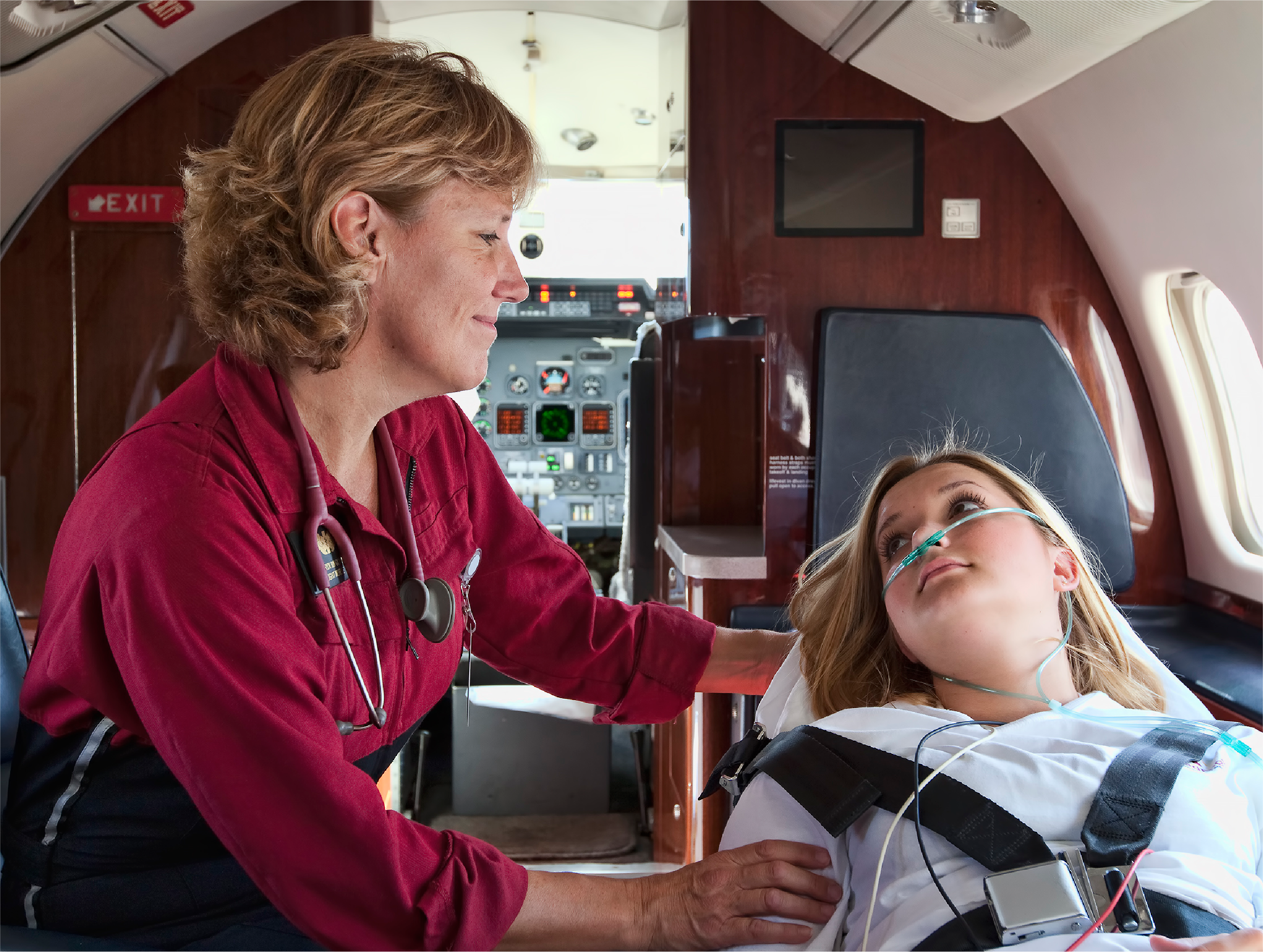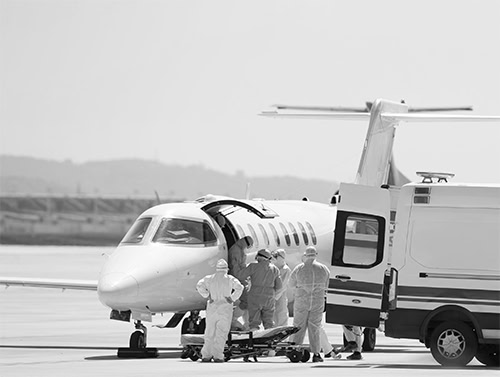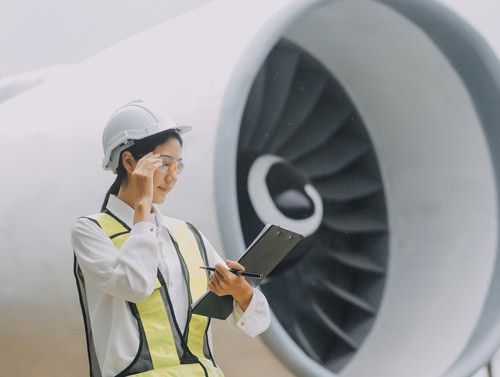Challenges of Managing Orthopaedic Cases on Air
Not all cases of air transfer are about managing patients on multiple life support or critical care. However, other underlying non-life-threatening conditions may also require high levels of attention and dedicated care during aeromedical transfer, for example, patients with musculoskeletal involvement.
Musculoskeletal issues can arise from different causes such as fractures and dislocations due to trauma/falls etc. It can also be spinal and vertebral issues, traumatic and non-traumatic. Also, there are cases with congenital malformations, which require specialized care. These cases may be operated upon, or might still be waiting to be operated on after transfer.
Challenges of Immobilisation Inside Aircraft
In most cases, specialized care is needed: special splints and traction devices can be used for immobilization, while pain has to be managed with oral or IV analgesics as per the patient’s tolerance levels and clinical status. Tractions can be set up inside an aircraft too, but need to be planned properly.
Not all types of aircraft can give additional space at the leg end to accommodate the traction system. The type of aircraft, the seating arrangement of the stretcher, and the space at the leg end, etc need to be taken into consideration before taking a patient with traction onboard. The metal weight usually is replaced by water, and sometimes with sand. Proper care has to be taken to stabilize the traction kit and the weight during take-off, landing, and turbulence.
Splints can also be tricky at times. For eg, the availability of Thomas splints can not be assured at times, when the case has to be moved early. But with the commonly available resources, a Thomas splint can be made on the scene. Using crutches with soft rolls, secure belts, etc, a long limb can be splinted without much hassle.
Special Care for Vertebra
Specialized mats with a soft bed, immobilizers, etc can be used in addition to the collars and braces for the spine. There are patients with congenital anomalies of the spine and extremities, especially child patients, who might need specialized braces for support. This has to be arranged before the transfer since alternatives or replacements may not be possible later due to size incompatibility.
Even with all the preparations for immobilization and minimizing movements, still, some patients will have exaggerated pain since air transfer will require moving the patient in more than a few instances. Careful and monitored use of analog sedatives is needed in such situations, and the same has to be outweighed by the clinical risks associated.
Like any clinically unstable cases for transfer, the air-medical transfer of patients with musculoskeletal issues, thus, requires specialized attention and care, including meticulous preparation for scientifically sound execution. This is a Bluedot promise: to ensure the journey is hassle-free as possible for the patient.
Wishing you Hope & Positivity,
Team Bluedot



